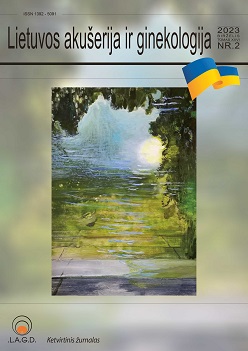Comparison of multiple pregnancy course and its outcomes after assisted fertilisation and natural fertilisation
Abstract
Summary. Rising numbers of assisted reproductive technology procedures result in higher figures of obstetric and perinatal complications. These complications are frequently associated with multiple pregnancy, which is a side effect of assisted reproductive technologies. In order to avoid multiple pregnancy-related complications many countries have established single embryo transfer policies. Therefore, since 2009 the number of multiple pregnancies has been steadily declining. Vanishing twin pregnancies, preterm birth, newborn`s low birth weight, newborn admission into intensive care units, and perinatal mortality are the most common complications and relatively more frequent during multiple pregnancies resulting from assisted reproductive technologies, than in those conceived naturally. Due to insufficient research in this field, there is currently no consensus on whether multiple pregnancies resulting from assisted reproductive technologies have an impact on the development of congenital anomalies. Meanwhile, it is believed that the method of conception does not have any effects on maternal health, labour, and postpartum period in case of dichorionic twin pregnancies. Research data on this topic is quite controversial because it is still unknown whether the assisted reproductive technologies or conditions determining such methods of conception have more impact on maternal and perinatal complications.

